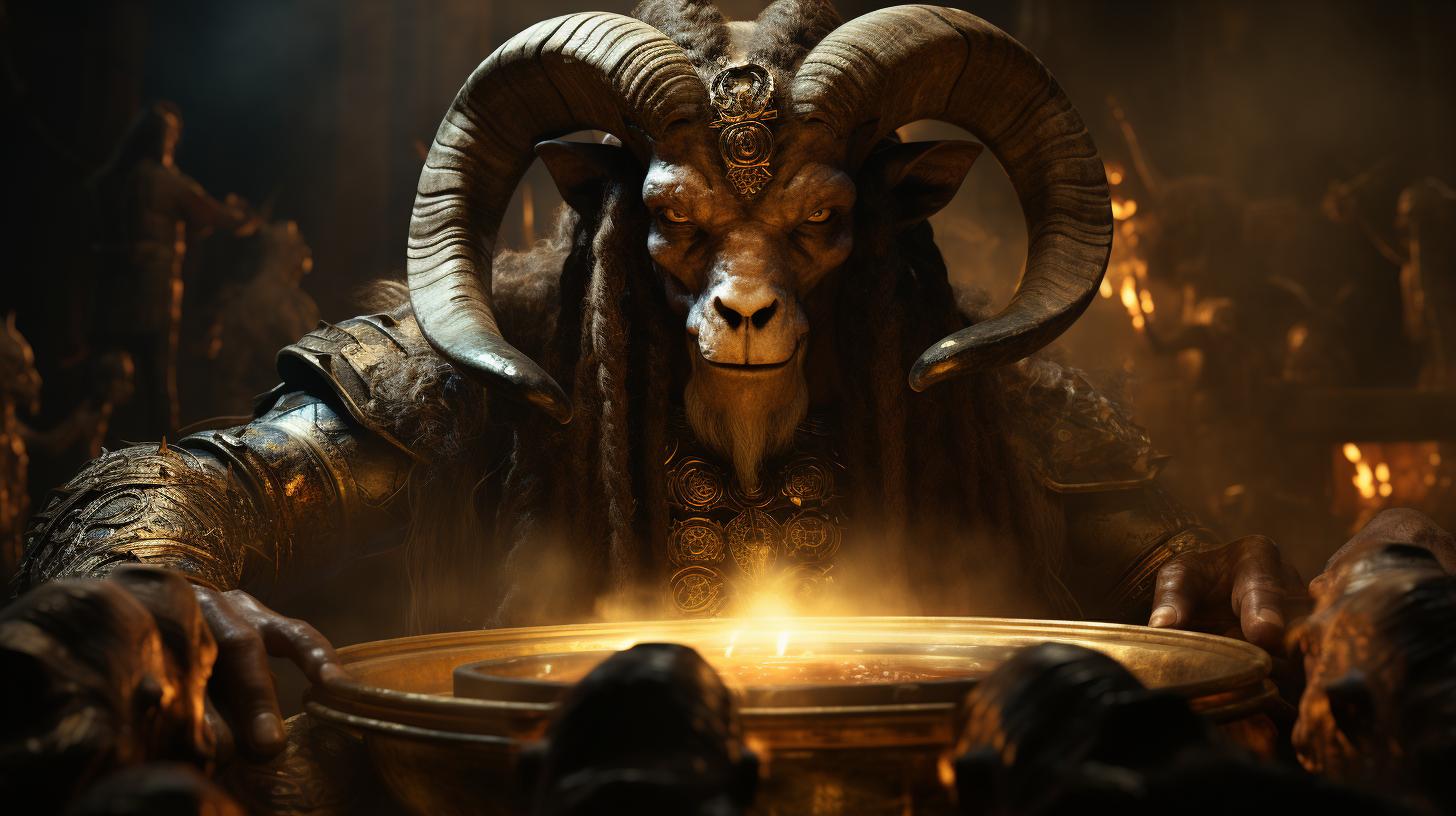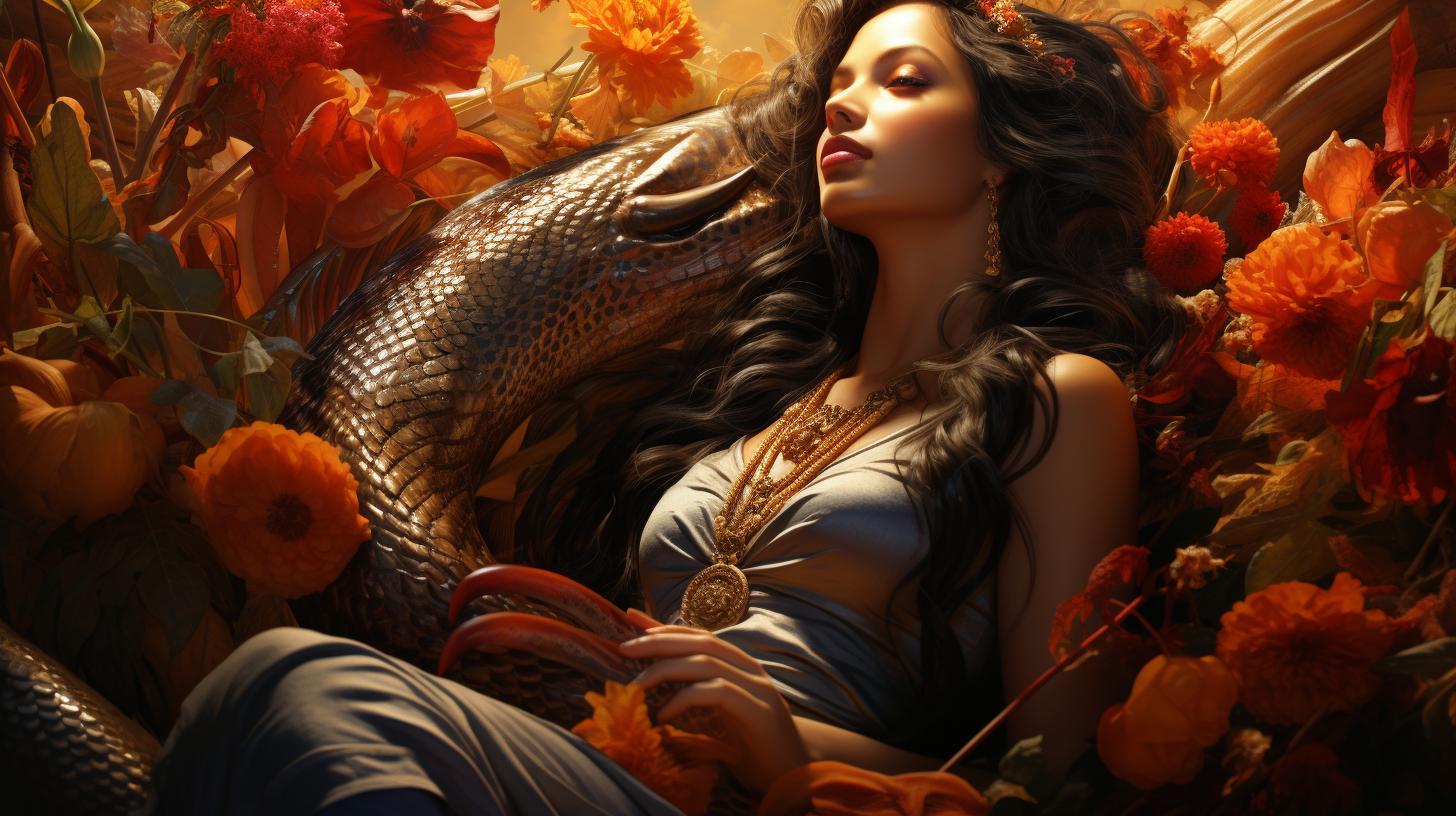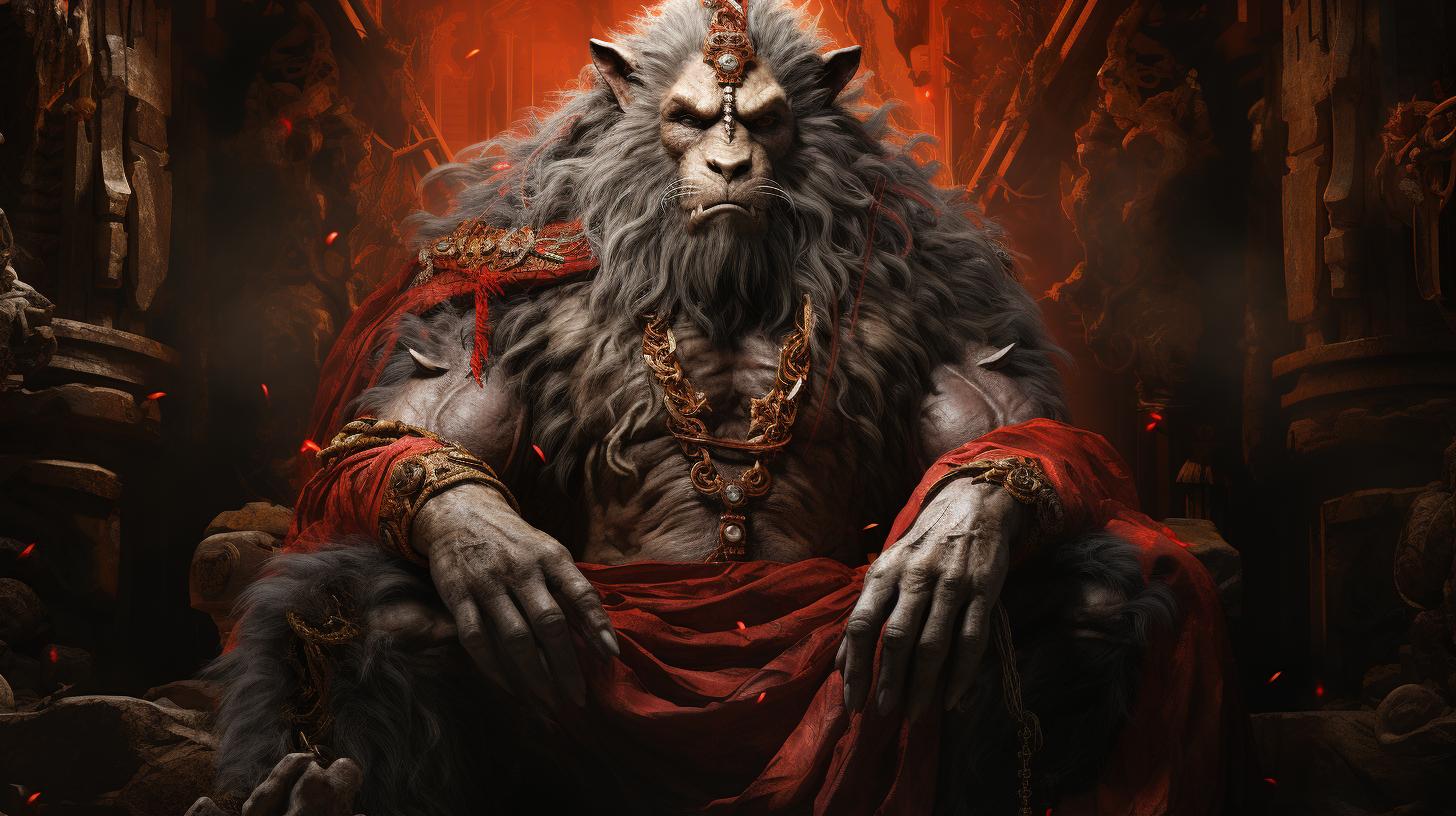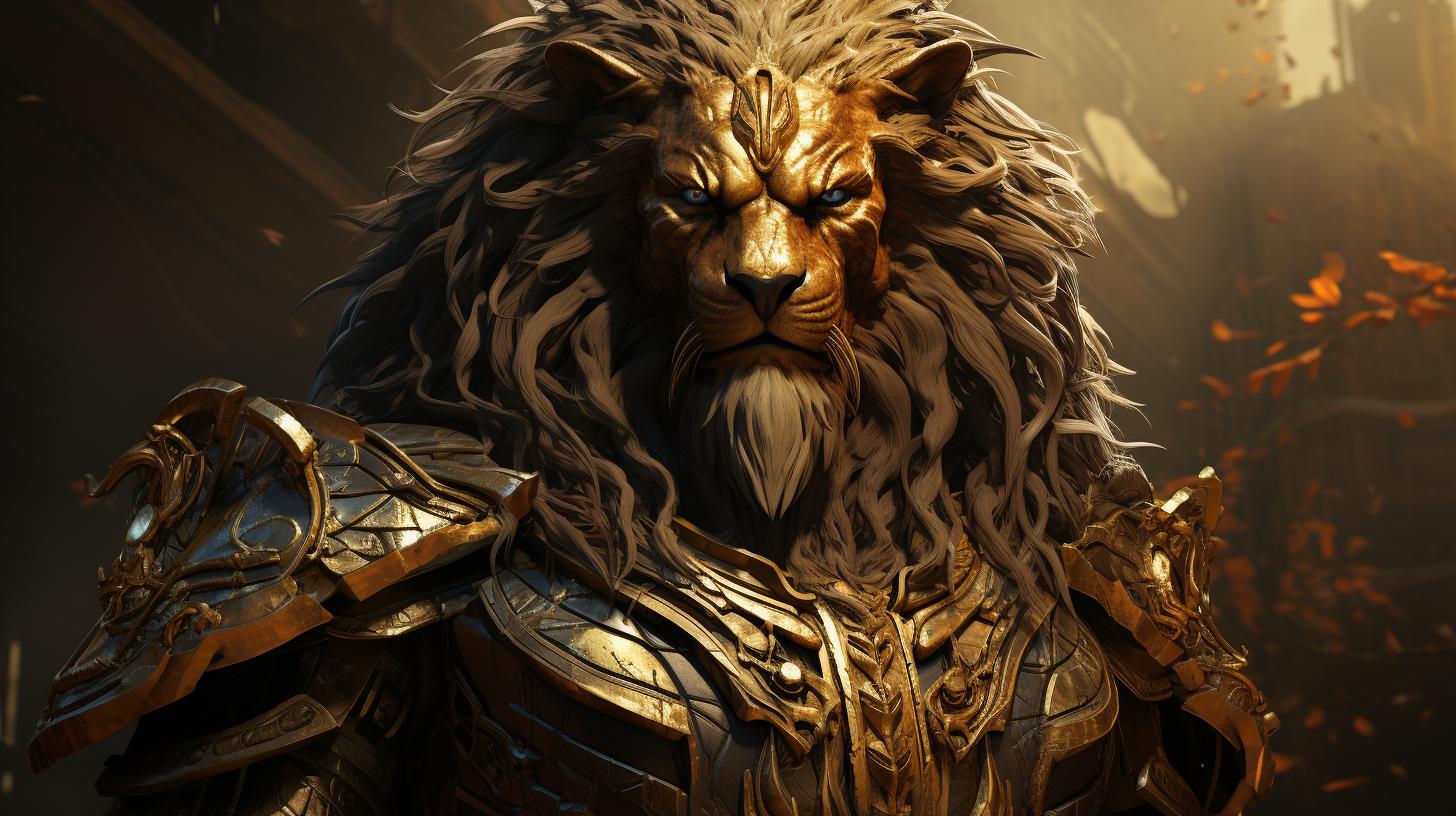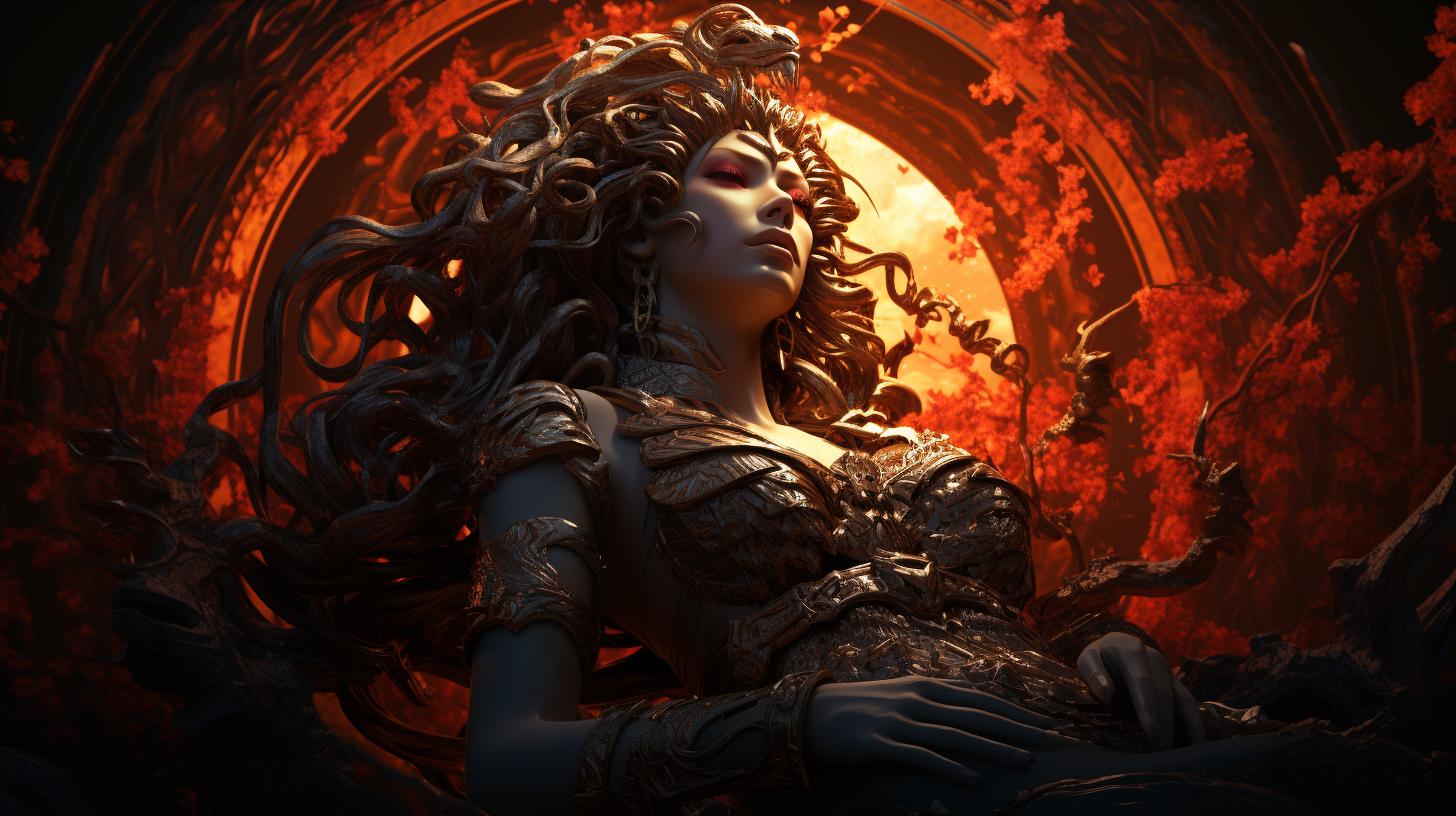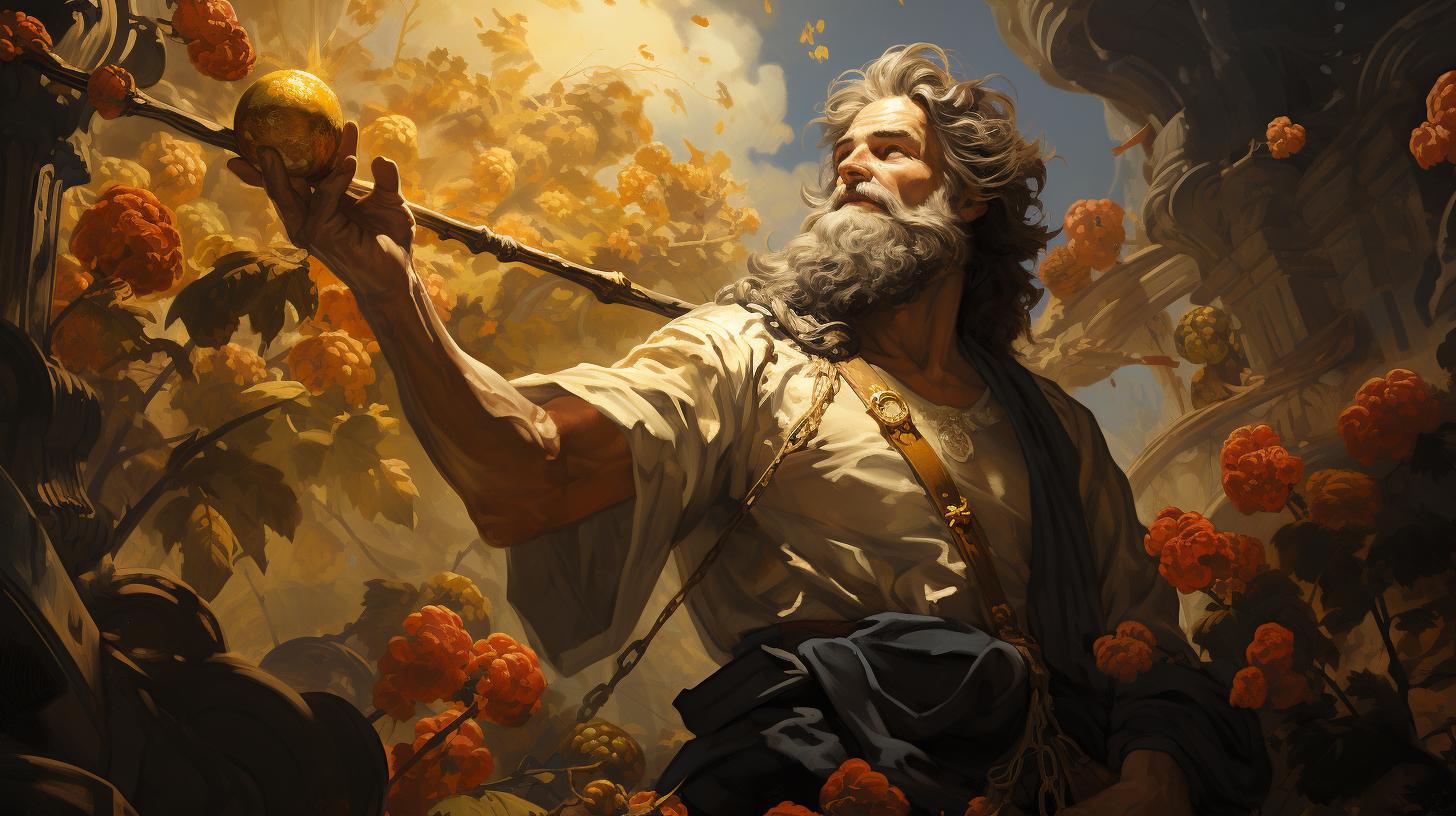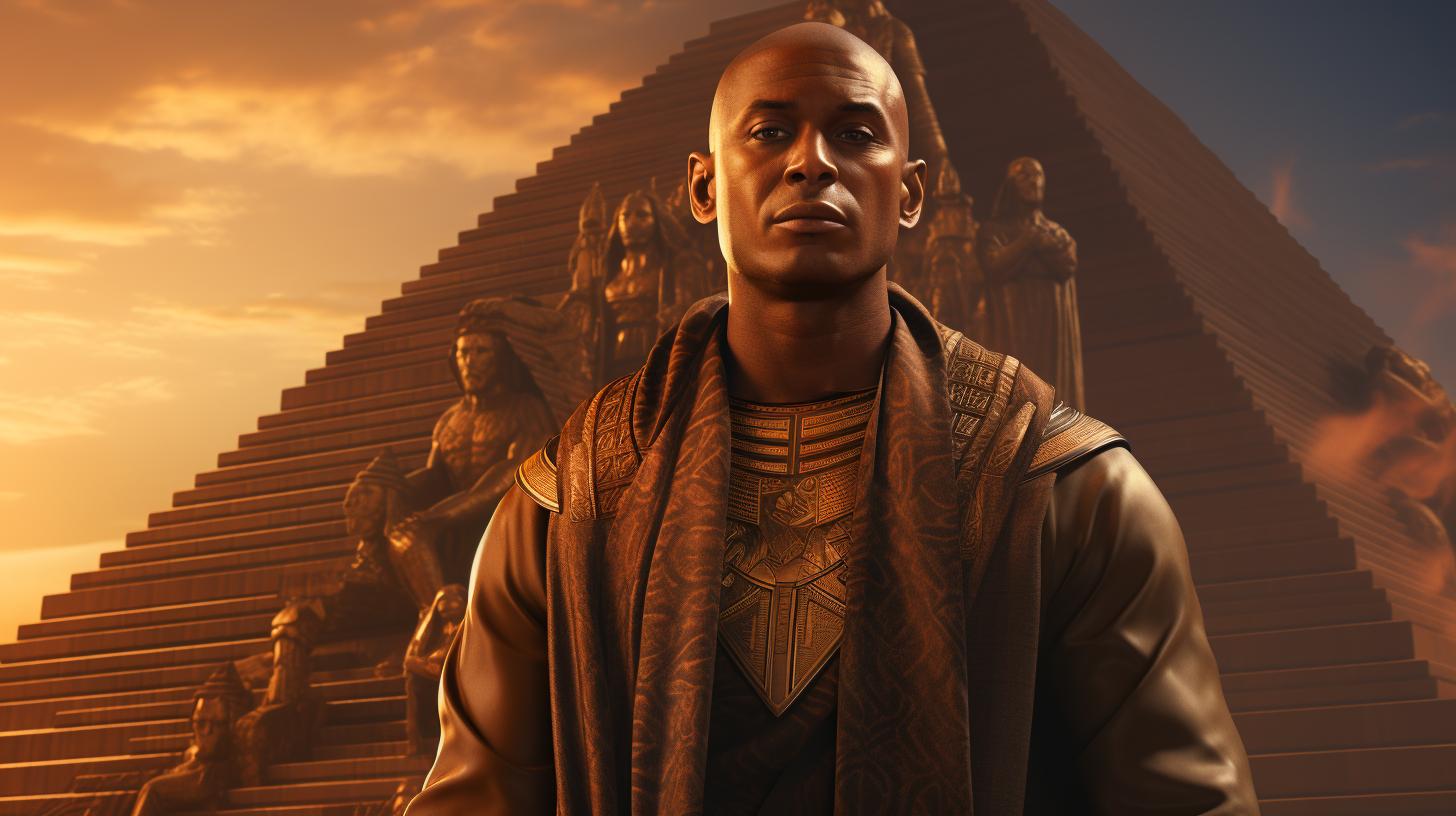Ancient Egyptian God Khnum: The Divine Creator and Protector
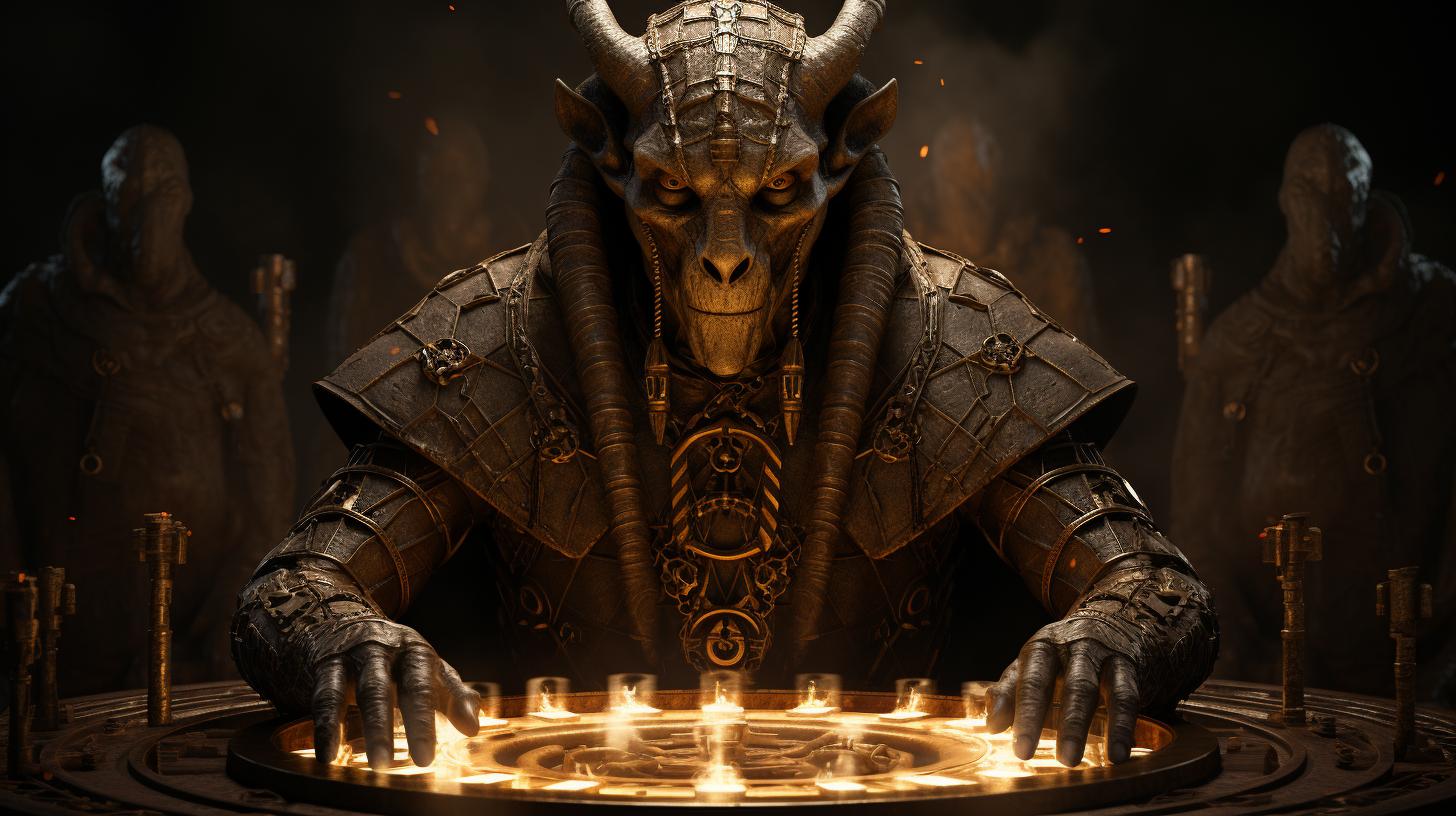
Ancient Egyptian god Khnum was a revered deity in Egypt for centuries, known as a creator and protector. Associated with water, fertility, and procreation, Khnum played a significant role in Egyptian mythology.
Depicted as a ram-headed figure, Khnum’s connection with the Nile and its annual floods played a vital role in the fertility of the land. Worshiped primarily in places like Elefantina and Herwer, Khnum held an important position in Egyptian religious practices and was often invoked in rituals and funerary ceremonies.
Let’s explore the intriguing characteristics and symbolism surrounding this ancient Egyptian divinity.
Overview of Ancient Egyptian God Khnum
The ancient Egyptian god Khnum held a significant place in the pantheon of deities worshipped in the Nile Valley. Revered for his association with creation, fertility, and protection, Khnum played a crucial role in ancient Egyptian religion and mythology.
This overview aims to shed light on the unique attributes and importance of this ancient god in the Egyptian belief system.
As a creator deity, Khnum was believed to have shaped humanity from clay using his skill as a potter. He was responsible for fashioning not only humans but also the other gods themselves.
With his divine craftsmanship, Khnum breathed life into his creations, setting the foundation for the Egyptian civilization.
Additionally, Khnum’s association with fertility and procreation was of paramount importance to the ancient Egyptians. He was closely tied to the annual inundation of the Nile, which brought life-giving waters and fertile soil to the land.
Egyptians believed that Khnum controlled these floods, ensuring bountiful agricultural harvests and sustaining their society.
In Egyptian mythology, Khnum played a diverse and pivotal role. Notably, he was regarded as the protective father of all deities, symbolizing the unity and order among the gods.
His association with the sun god Ra extended into the underworld, where Khnum aided Ra during his nocturnal journey and protected him from the chaotic serpent Apep.
Depicted as a ram-headed deity, Khnum embodied both strength and wisdom. His unique appearance showcased his connection to the animal world, as well as his creative powers. Artistic representations often showcased Khnum as a man with the head of a ram or as a ram with horizontally twisted horns.
These depictions symbolized his association with both human and animal realms, exemplifying his divine attributes.
The worship of Khnum centered primarily on the island of Elephantine, where he was venerated as the god of the Nile alongside the goddesses Satis and Anukis. However, his influence extended to other regions of Egypt, with important cults established in locations such as Herwer and Esna.
The temples dedicated to Khnum served as centers of both religious devotion and civic life, highlighting his integral role in ancient Egyptian society.
In conclusion, Khnum, the ancient Egyptian god, held a prominent place in the pantheon of deities. Revered as a creator, a protector, and a symbol of fertility, Khnum shaped the foundation of Egyptian civilization.
His association with the Nile, his role in mythological narratives, and his distinctive depictions solidify his enduring legacy in ancient Egyptian religion and culture.
Significance of Khnum in Ancient Egyptian Religion
The ancient Egyptian god Khnum played a vital role in the religious beliefs and practices of this ancient civilization.
As one of the oldest deities in Egypt, Khnum held significant importance in the pantheon, being associated with various aspects of life and the divine realm.
Khnum as a Creator Deity
Khnum was revered as a divine creator, responsible for shaping and molding the very essence of life.
Using his skill as a potter, he was believed to have crafted humanity from the sacred clay of the Nile riverbed, breathing life into his creations and granting them unique identities.
The ancient Egyptians held Khnum in high regard for his ability to fashion individuals into existence and bestow upon them individuality and purpose.
Khnum’s Association with Fertility and Procreation
Another significant aspect of Khnum’s role in ancient Egyptian religion was his close association with fertility and procreation. As a god of the Nile, Khnum was believed to ensure the annual floods that provided fertile soil for agricultural abundance.
His involvement in the reproductive process extended beyond human creation, as he was also believed to be responsible for sustaining the fertility of the land, ensuring bountiful harvests and the prosperity of the kingdom.
Khnum’s Role in Egyptian Mythology
Khnum’s significance extended beyond his role as a creator and nurturer. He played a vital role in Egyptian mythology, particularly in the protection and defense of the divine order. Khnum was often depicted as a defender of the sun god Ra during his nightly journey through the underworld, warding off the chaos embodied by the serpent Apep.
This portrayal of Khnum as a brave and powerful deity solidified his position as a protector and upholder of divine order in the ancient Egyptian belief system.
Depictions and Symbolism of Khnum
Khnum, the ancient Egyptian god, was represented in various forms and held deep symbolism in Egyptian culture.
Let’s explore two significant aspects of Khnum’s depictions and symbolism: his representation as a Ram-Headed Deity and his connection with Water and the Nile.
Representations of Khnum as a Ram-Headed Deity
Khnum was often depicted as a divine being with the head of a ram, a symbol of strength and power in Egyptian iconography.
The ram’s horns, gracefully twisted horizontally, added to his majestic appearance. This portrayal highlighted Khnum’s association with fertility, as rams were associated with virility and procreation.
The ram-headed depiction of Khnum also embodied his creative nature.
Just as rams are known for their ability to charge forward with force, Khnum symbolized the creative energy required to shape and mold the world. This representation emphasized his role as the mighty creator, fashioning both humans and the gods themselves.
Khnum’s Connection with Water and the Nile
Water held great significance in ancient Egyptian culture, and Khnum was intimately connected to its life-giving properties. As the god responsible for the annual flooding of the Nile, Khnum ensured the fertility of the land by depositing nutrient-rich sediment.
This association with water linked him to the cycles of life, growth, and abundance.
The Nile River was considered crucial to the prosperity of Egypt, and Khnum’s role in regulating its floods made him revered as a deity of immense power.
Through his connection with water and the Nile, Khnum not only facilitated agricultural abundance but also influenced the trade and economic prosperity of the ancient civilization.
Summary
Khnum’s depictions as a Ram-Headed Deity and his association with water and the Nile showcased his multifaceted symbolism. The ram head emphasized his creative abilities and role as a divine creator, while his connection with water highlighted his power to bring fertility and prosperity to the land.
These representations played a central part in Khnum’s worship and underscored his significance within ancient Egyptian mythology and religious practices.
Khnum’s Role in Egyptian Kingdom and Temples
Khnum’s Importance in Royal and Funerary Contexts
The ancient Egyptian god Khnum played a significant role in the kingdom and temple structures of ancient Egypt. His association with creation and fertility made him highly respected among the royal families of Egypt.
Khnum was often invoked in royal contexts, particularly during coronation ceremonies, as he was believed to ensure the prosperity and stability of the kingdom. His presence in such occasions symbolized the divine authority bestowed upon the pharaohs.
Furthermore, Khnum’s influence extended to funerary practices in ancient Egypt. He was regarded as a protector of the deceased and was believed to assist the souls in the afterlife. Rituals involving Khnum were performed to seek his guidance and favor for a favorable judgment in the Salons of Ma’at, where the soul’s fate in the afterlife was determined.
His connection with creation also tied him to the eternal cycle of life and death, making him a vital figure in funerary rites.
Khnum’s Worship in Egyptian Temples
Khnum was the object of worship in various Egyptian temples dedicated to his deity. These temples were considered sacred spaces where offerings and prayers were made to honor Khnum and seek his blessings.
They served as important centers of religious practices and gatherings for the worshipers.
In these temples, elaborate rituals were performed to show devotion to Khnum. The priests and priestesses acted as intermediaries between the people and the deity, conducting ceremonies and interpreting Khnum’s will.
The worship involved elaborate processions, prayers, and offerings, which included flowers, food, and incense, all meant to please and honor Khnum.
Additionally, these temples often housed statues and depictions of Khnum, providing a physical representation of the deity for the worshipers to connect with.
The worship of Khnum in Egyptian temples emphasized the importance of fertility, creation, and the concept of divine protection in the religious practices of ancient Egypt.
Overall, Khnum’s role in the Egyptian kingdom and temples was crucial, representing power, creation, and protection.
From royal ceremonies to funerary rituals, his presence and influence were deeply intertwined with the lives and beliefs of the ancient Egyptians. The worship of Khnum in temples served as a way for the people to seek his favor and guidance in various aspects of their lives, reaffirming his significance in Egyptian society.
Other Deities Associated with Khnum
Khnum, the ancient Egyptian god, had significant associations and relationships with other deities in Egyptian mythology. These connections provide further insight into Khnum’s role and importance within the pantheon of gods and their collective narratives.
Khnum’s Relationship with Ra, Shu, Geb, and Osiris
Within Egyptian mythology, Khnum’s association with other prominent deities highlights his diverse role and interconnectedness within the divine hierarchy. One such connection is with Ra, the sun god, whom Khnum aided in his nocturnal journey through the treacherous realm of the underworld.
This cooperative relationship between Khnum and Ra demonstrates the protective nature of Khnum and his role in defending Ra against the malevolent serpent Apep.
Khnum’s relationship with Shu, the god of air and sunlight, underscores his connection to the natural elements.
As Shu held the responsibility of separating the earth (Geb) and the sky (Nut), Khnum’s association with these deities reinforces his role in the creation and maintenance of cosmic order.
Geb, the earth god, forms another significant connection with Khnum. As the father of Osiris, Isis, Seth, and Nephthys, Geb’s lineage links Khnum to this powerful divine family.
Khnum’s relationship with Geb further solidifies his role as a creator deity and a central figure in Egyptian cosmology.
Osiris, the god of the afterlife and rebirth, also shares a connection with Khnum.
As the father of Horus, who inherited the throne of Egypt after Osiris’ death, Osiris represents the cycle of life, death, and resurrection. Khnum’s association with Osiris further emphasizes his protective and nurturing role, as he safeguards the well-being and transition of souls in the afterlife.
Khnum’s Protective Role in Egyptian Mythology
In addition to his relationships with other deities, Khnum played a crucial protective role within Egyptian mythology. As the guardian of the dead, he was invoked during funerary rituals to ensure a favorable judgment in the Hall of Ma’at, where the deceased’s heart was weighed against the feather of truth.
Khnum’s influence and involvement in the afterlife highlight his status as a benevolent deity, guiding souls through their eternal journey.
Furthermore, Khnum’s connection to the sun god Ra and his assistance in defending Ra against the chaos symbolized by the serpent Apep showcases his protective nature.
This aspect of Khnum’s character positions him as a guardian deity, defending order and stability against the forces of chaos.
Overall, Khnum’s relationships with other deities and his protective roles intertwine to paint a comprehensive picture of his significance within ancient Egyptian mythology.
His associations with Ra, Shu, Geb, and Osiris reflect his diverse responsibilities and his role as a creator, protector, and guide in the complex tapestry of Egyptian religious beliefs.
Frequently Asked Questions about Khnum
What was Khnum’s role in the creation of humanity?
Khnum played a pivotal role in the creation of humanity according to ancient Egyptian mythology. Using his divine abilities, Khnum sculpted human bodies from clay on his potter’s wheel, carefully fashioning each individual to ensure their unique characteristics.
This act demonstrated his power as a creator deity, shaping the very essence of human life.
How was Khnum depicted in ancient Egyptian art?
In ancient Egyptian art, Khnum was often depicted as a deity with the head of a ram. This distinctive representation symbolized his association with fertility and procreation. With his curved and horizontally twisted horns, he embodied strength and steadfastness.
Artists also portrayed Khnum as a human figure with a ram’s head, showcasing his unique dual nature and divine powers.
Where was Khnum primarily worshipped in ancient Egypt?
Khnum enjoyed significant worship in various locations throughout ancient Egypt. However, the primary center of his cult was the island of Elephantine, where he held a prominent position as the god of the Nile alongside the goddesses Satis and Anukis.
Other notable locations of his worship included Herwer and Esna, showcasing the wide reverence and influence he commanded across the Egyptian civilization.
What was the significance of Khnum’s association with water?
Khnum’s association with water, particularly the Nile, held immense significance in ancient Egyptian beliefs.
As the source of life, the Nile’s annual floods deposited fertile silt, promoting agricultural abundance and sustaining the civilization. Khnum’s connection with water represented his role as the guardian of this life-giving force, ensuring its proper flow and prosperity.
Additionally, his association with water highlighted his involvement in the creation of the world and his role in the cycle of life and death.
.











